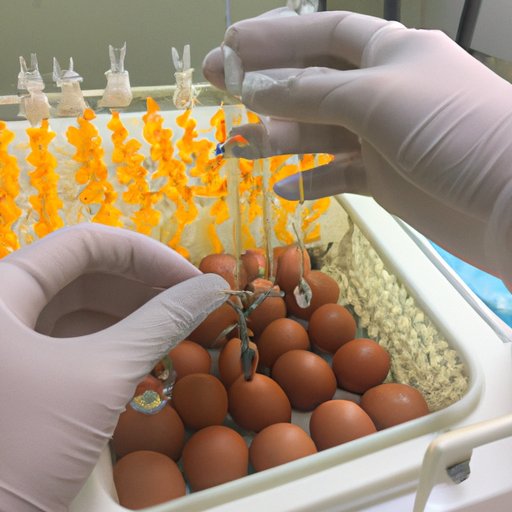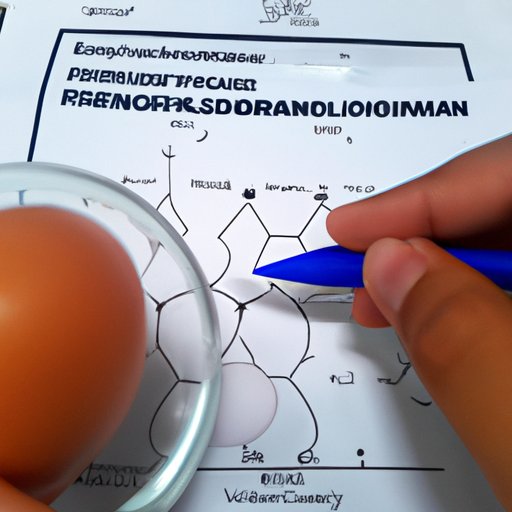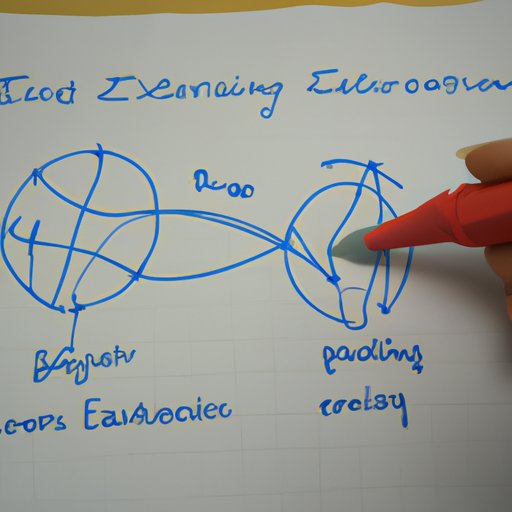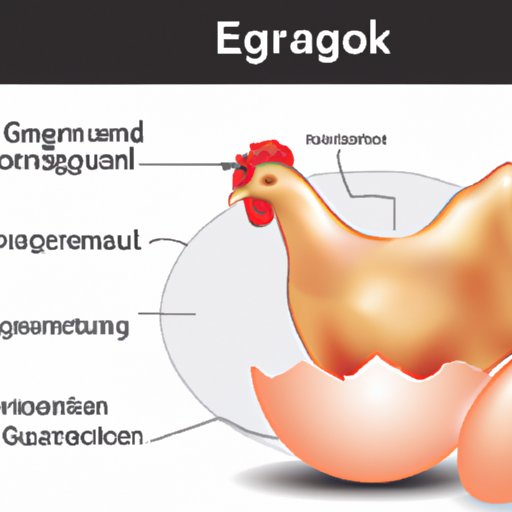Introduction
Have you ever wondered how a chicken egg gets fertilized? The process of chicken egg fertilization is fascinating and complex, involving several stages and various components. This article will explore the science behind this process and provide an overview of what happens when a chicken egg is fertilized.

Understanding the Fertilization Process of Chicken Eggs
To understand how a chicken egg gets fertilized, it is important to first understand the biology behind the process. When a rooster mates with a hen, the rooster’s sperm cells are released into the hen’s oviduct and travel up to the infundibulum where they can come into contact with the hen’s ovum, or egg cell. If the sperm cell successfully penetrates the egg, it can then begin the process of fertilization.

Examining the Role of Roosters in Chicken Egg Fertilization
The role of the rooster in chicken egg fertilization is essential. Without the presence of a rooster, there would be no sperm cells to penetrate the egg cell and begin the process of fertilization. In addition, the rooster’s sperm must be viable and healthy in order for fertilization to take place. For this reason, it is important that roosters receive proper nutrition and care in order to ensure that their sperm is of good quality.
Exploring the Science Behind a Chicken Egg’s Fertilization
Once the sperm has penetrated the egg cell, the process of fertilization begins. During this process, the sperm cell releases its genetic material into the egg, which then combines with the egg’s genetic material to form a single cell. This single cell contains the genetic information of both the egg and the sperm, and is known as a zygote. The zygote will then divide and multiply as it develops into an embryo.

Analyzing the Mechanics of Chicken Egg Fertilization
In order for fertilization to occur, the sperm cell must be able to penetrate the egg cell. This is achieved through a mechanism known as “acrosomal reaction”. This process involves the release of enzymes from the acrosome, which is located at the tip of the sperm cell. These enzymes digest the outer layer of the egg cell, allowing the sperm to penetrate it and release its genetic material.
Discovering the Role of Hormones in Chicken Egg Fertilization
Hormones play an important role in the fertilization process of chicken eggs. In particular, hormones such as estrogen, progesterone, and prolactin help to regulate the timing of ovulation and ensure that the egg is released at the right time for fertilization to take place. In addition, these hormones also help to stimulate the production of the proteins and enzymes required for the acrosomal reaction to occur.
Conclusion
In summary, the process of chicken egg fertilization is complex and involves several stages. It begins when the rooster’s sperm cells penetrate the hen’s egg cell and releases its genetic material. This triggers the acrosomal reaction, which allows the sperm to penetrate the egg cell and release its genetic material. Finally, hormones such as estrogen, progesterone, and prolactin help to regulate the timing of ovulation and ensure that the egg is released at the right time for fertilization to take place. Understanding how a chicken egg gets fertilized is an important part of understanding the biology behind poultry production.
(Note: Is this article not meeting your expectations? Do you have knowledge or insights to share? Unlock new opportunities and expand your reach by joining our authors team. Click Registration to join us and share your expertise with our readers.)
